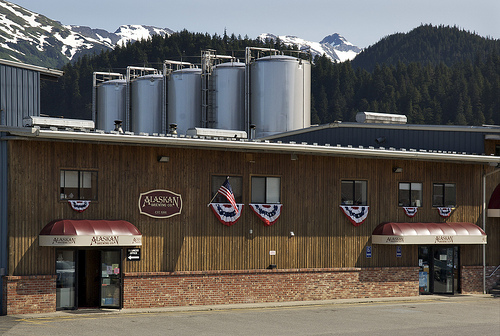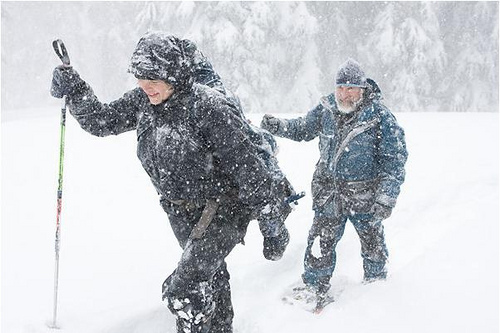The thought of having to hand-carry a honey bucket, (a five gallon pail filled with human waste) out of your house and dump it to an outdoor common collection container in winter temperatures that drop to -55 °F, is an unpleasant scenario. For some residents in the community of Lower Kalskag, and other rural Alaskan communities, this is a reality. They have no indoor plumbing, and no indoor hot or cold running water.
The community of Lower Kalskag, Alaska, is remotely located 350 miles west of Anchorage in a persistent poverty area. This small, predominantly Alaska Native community has a population of around 280 and roughly fifty percent of its homes still lack adequate sanitation systems. The lack of sanitation services is a dire health and safety issue faced daily by a number of rural Alaska residents. Read more »
Rural Development is the lead Federal agency that works to ensure that rural families have access to safe, well-built, affordable homes. In February 2012, the agency initiated a two-year, pilot refinancing program in 19 states hardest hit by the Nation’s housing downturn to help eligible USDA borrowers reduce their monthly housing costs.
Today, USDA announced that the program is expanding to include eligible rural residents in Puerto Rico, Alaska, Arkansas, Colorado, Idaho, Kansas, Missouri, Montana, North Dakota, Oklahoma, South Dakota, Texas, Utah, Washington, West Virginia and Wisconsin. Read more »
Tags: Alaska, Arkansas, Colorado, Idaho, Kansas, Missouri, Montana, North Dakota, Oklahoma, Puerto Rico, RD, Single-Family Housing Guaranteed and Direct Programs, South Dakota, Tammy Trevino, Texas, Utah, Washington, West Virginia, Wisconsin
 Rural Development
Rural Development

Using a first-of-its-kind steam boiler fueled by spent grain, the Alaskan Brewing Company in Juneau will reduce its use of fuel oil by over 65 percent. The boiler was funded in part through the USDA Rural Energy for America (REAP) Program. Photo credit: Alaska Brewing Company photo.
In Alaska, it’s all about great beer and the Alaska Brewing Company, LLC (ABC) in Juneau is the 12th largest craft brewery by sales volume in the U.S. According to their website, the Alaskan Brewing Company became the 67th operating brewery in the United States and the only brewery in Alaska in 1986. Read more »

Snow surveyors approach SNOTEL site on Mount Hood.
Koeberle’s job carries her over mountains by helicopter and horse, snowshoes and skis. She has encountered grizzly bears, avalanches and wolves and visited ridges that few people have seen.
Koeberle is a hydrologist and snow surveyor for USDA’s Natural Resources Conservation Service (NRCS) and works on the agency’s snow survey team—a group of specially trained scientists who maintain snow gauges that are important to farmers, business owners and many other people in the West. Read more »
Tags: Alaska, Arizona, California, Colorado, Conservation, Environment, Idaho, Montana, National Weather Service, Nevada, New Mexico, NRCS, Oregon, SNOTEL, Snow Survey, Utah, Washington, Wyoming
 Conservation
Conservation

Alaska's oval-leaf blueberry, Vaccinium ovalifolium.
On a typical late summer day in Kake, Alaska, residents prepare for the day by layering heavy-duty rain gear, protective gloves and rubber boots over jeans and fleece. Most of these Alaskans will head to work supporting the local fishing industry. A select few, however, will be bundling up for a slightly different catch: wild organic blueberries. Read more »

Saint Paul Harbor in the Pribilof Islands. The Native community will soon receive improved broadband service thanks to USDA funding support. Photo courtesy of Scott Schuette and used with permission of TDX.
The significance of a recently awarded USDA Community Connect Broadband grant to the predominantly Native town of Saint Paul, Alaska, can’t really be appreciated until you know about this isolated community on one of the Pribilof Islands in the middle of the Bering Sea. It is not served by the Alaska Marine Highway ferry system and the major shipping routes are 250 miles to the south. The island is too far from the closest urban centers (more than 700 miles) to reach by light aircraft. No commercial jet service is available. Most supplies arrive by charter or flying service while freight arrives by barge, seasonally when the Bering Sea is ice-free. Winter travel in the Bering Sea can be extreme with violent seas and high winds. Air travel throughout the remaining months is often disrupted by heavy fog and ice fog. To say this is a remote area is an understatement.
The Community Connect project is desperately needed on Saint Paul Island. Available 2010 Census statistics show the community in distress. In 1990 the population was 763; by 2010 it was 479. This is at a time when Alaska’s less remote non-Native rural population is growing. With few available natural resources on this treeless island, Internet Connectivity is the core foundation for economic and demographic turn around. Read more »




